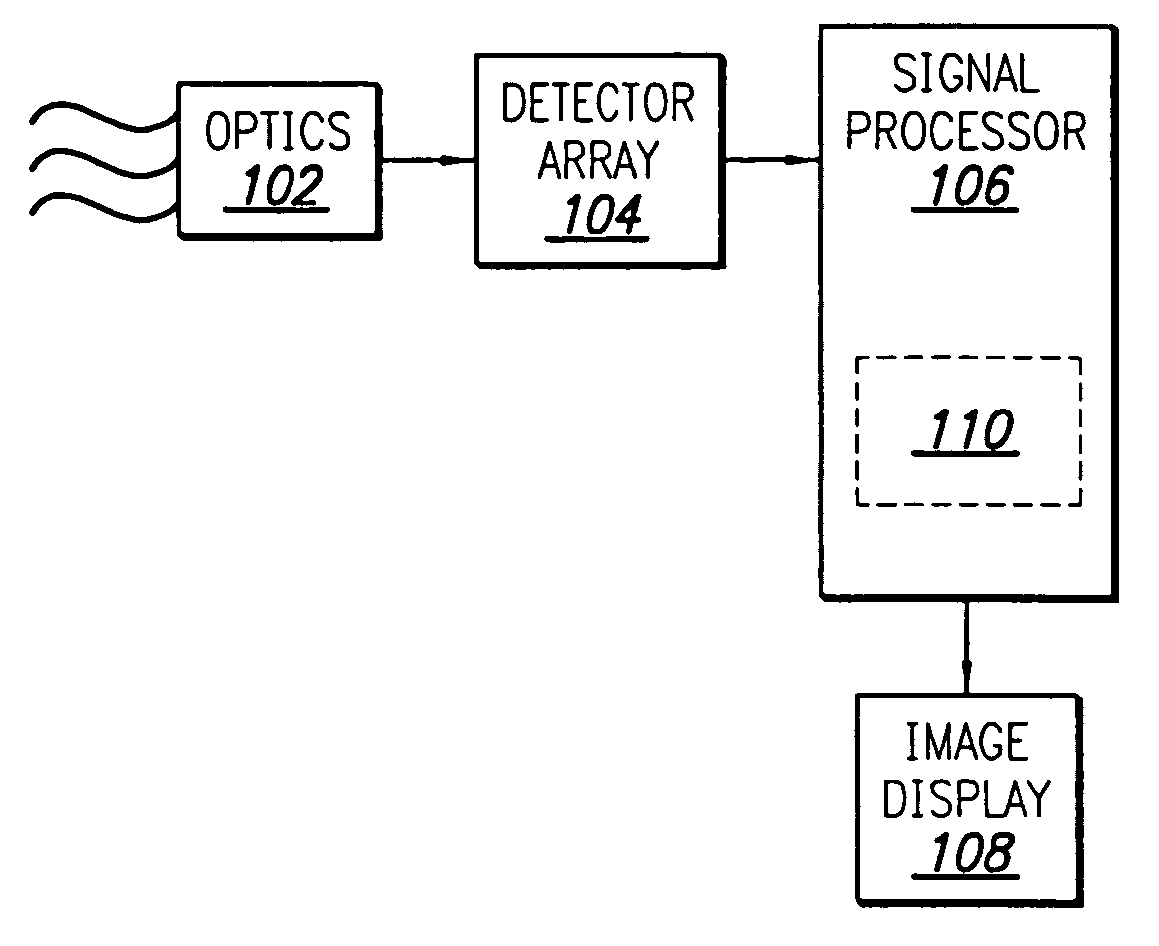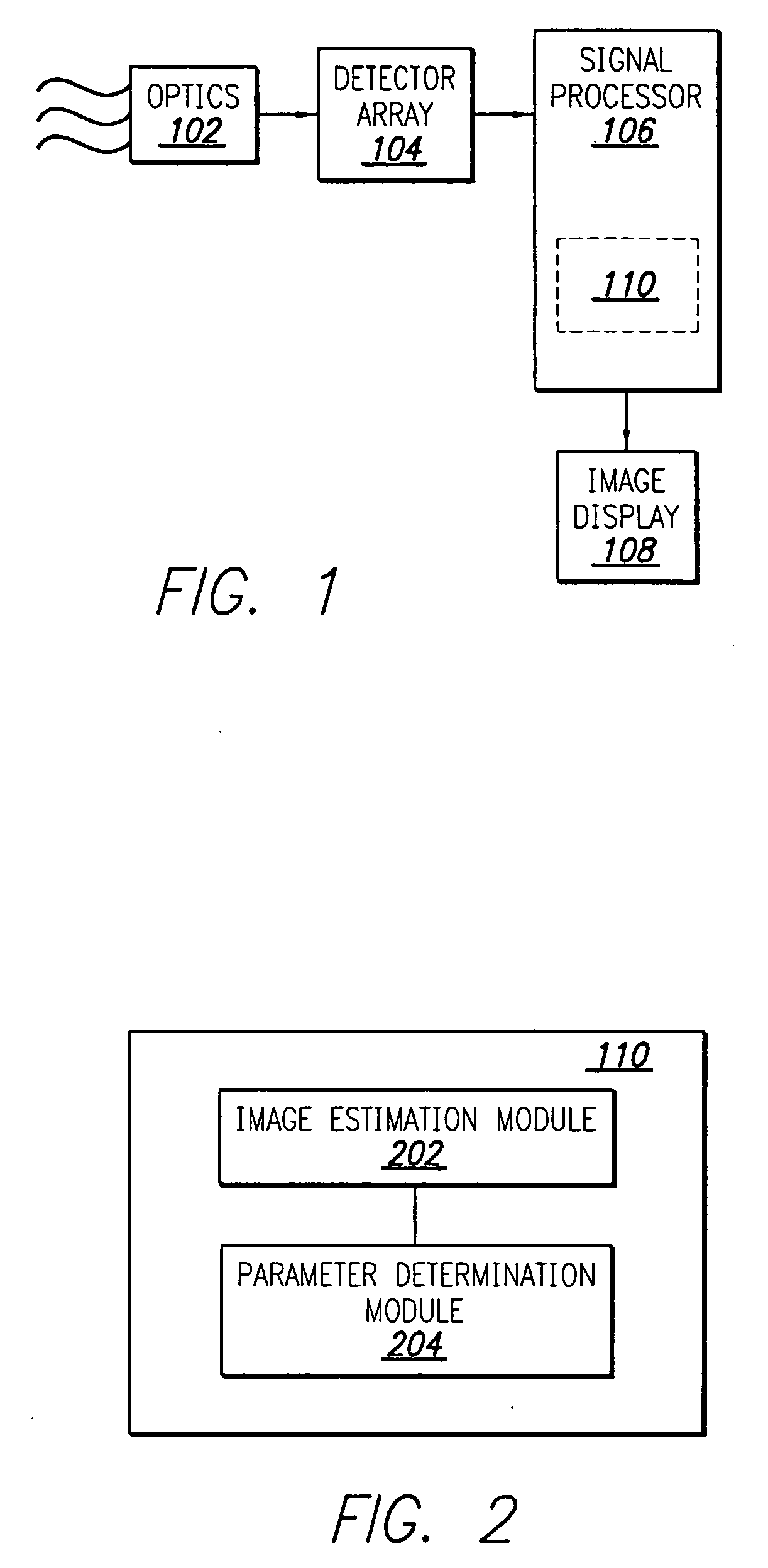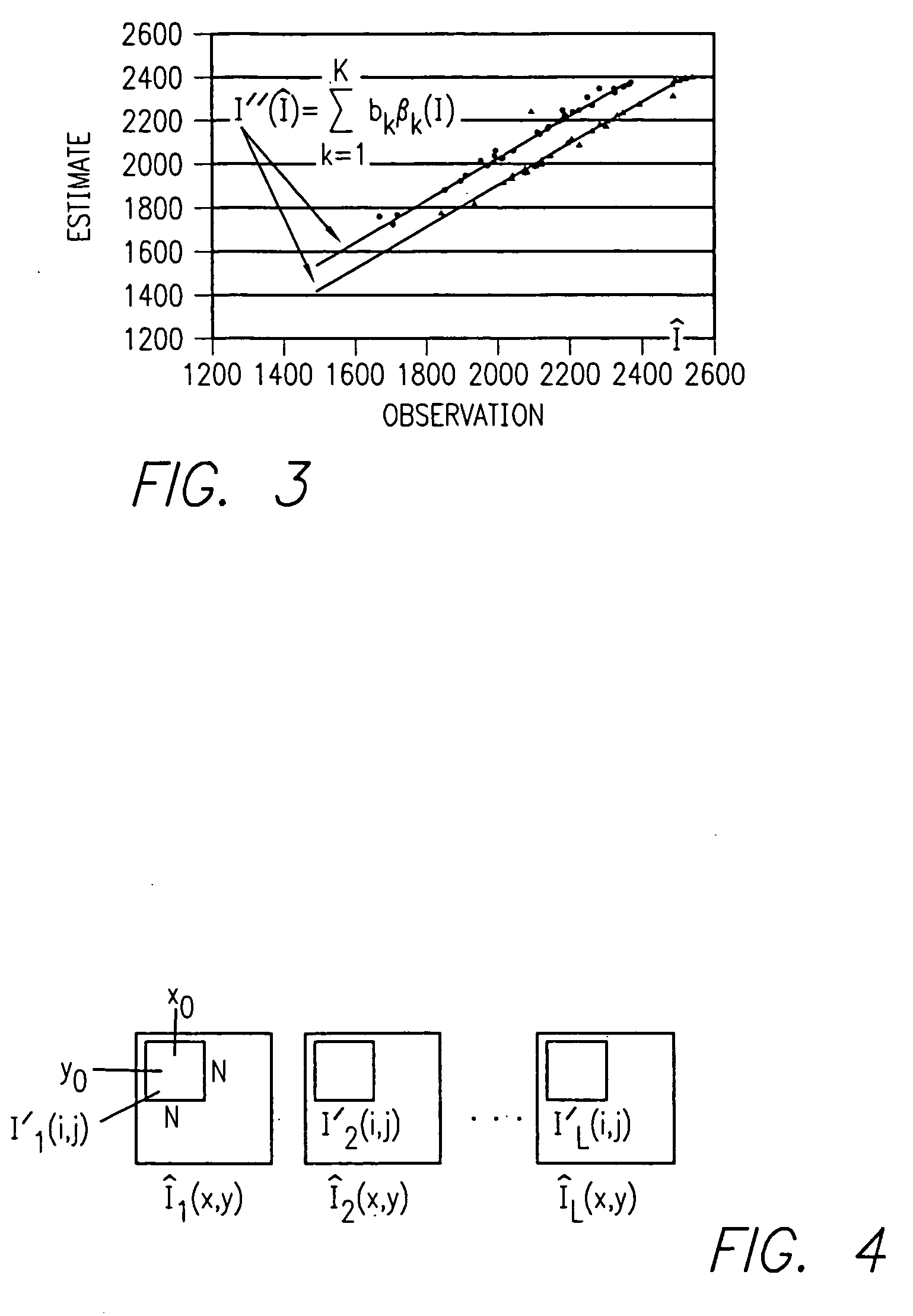System and methods for determining nonuniformity correction parameters in detector-array imaging
a detector array and correction parameter technology, applied in the field of imaging systems, can solve the problems of spacial non-uniformity, reduce the resolving capability of the imaging system, and the quality of the resulting images obtained with the detector array imaging system, and achieve the effect of strong robustness to outliers and faster and more efficien
- Summary
- Abstract
- Description
- Claims
- Application Information
AI Technical Summary
Benefits of technology
Problems solved by technology
Method used
Image
Examples
Embodiment Construction
[0029] The present invention is more particularly described in the following description and examples that are intended to be illustrative only since numerous modifications and variations therein will be apparent to those skilled in the art. As used in the specification and in the claims, the singular form “a,”“an,” and “the” may include plural referents unless the context clearly dictates otherwise. As used in the specification and in the claims, the term “comprising” may include the embodiments “consisting of” and “consisting essentially of.”
[0030]FIG. 1 provides a schematic diagram of an exemplary operative environment 100 in which an imaging system according to one embodiment of the present invention can be used. The operative environment 100 illustratively includes an optical device 102 and, adjacent to the optical device, a detector array 104. Additionally, the operative environment 100 illustratively includes a signal processor 106 in electrical communication with the detecto...
PUM
| Property | Measurement | Unit |
|---|---|---|
| damping coefficients | aaaaa | aaaaa |
| energy | aaaaa | aaaaa |
| electrical | aaaaa | aaaaa |
Abstract
Description
Claims
Application Information
 Login to View More
Login to View More - R&D
- Intellectual Property
- Life Sciences
- Materials
- Tech Scout
- Unparalleled Data Quality
- Higher Quality Content
- 60% Fewer Hallucinations
Browse by: Latest US Patents, China's latest patents, Technical Efficacy Thesaurus, Application Domain, Technology Topic, Popular Technical Reports.
© 2025 PatSnap. All rights reserved.Legal|Privacy policy|Modern Slavery Act Transparency Statement|Sitemap|About US| Contact US: help@patsnap.com



